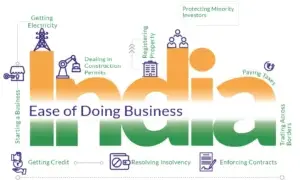Omar Abdullah’s recent public displays involving his sons – whether in the assembly or through a strategically placed op-ed in The Indian Express – seem more than coincidental. These gestures strongly suggest an attempt to subtly project them as the future heirs of the Abdullah dynasty. However, one cannot ignore the signs of a deeper truth: this may well be the last innings of the Abdullah family’s political legacy.
History is replete with examples showing that political dynasties, no matter how entrenched or powerful, often falter after three generations. This pattern, evident in various parts of the world, serves as a poignant reminder that longevity in politics is rarely guaranteed, even for the most illustrious families.
The Three-Generation Rule in History
The three-generation theory – often summarized as “from shirtsleeves to shirtsleeves in three generations” – can be observed across cultures and timelines:
- The Nehru-Gandhi Family: The Nehru-Gandhi dynasty began with Jawaharlal Nehru, flourished under Indira Gandhi, and peaked with Rajiv Gandhi. Post-Rajiv, the family’s political dominance has dwindled, with Rahul and Priyanka struggling to revive the Congress’s fortunes.
- The Kennedys in the United States: The Kennedy family’s political clout was monumental under Joseph Kennedy’s sons, John, Robert, and Edward. However, successive generations failed to maintain their stronghold.
- The Bhuttos in Pakistan: Zulfikar Ali Bhutto’s political legacy saw its peak under his daughter Benazir, but her successors have been unable to regain the same stature.
- The Romanovs in Russia: The Romanov dynasty ruled Russia for over 300 years, starting with Michael I in 1613 and peaking with rulers like Peter the Great and Catherine the Great. However, by the third generation of the 19th century, under Nicholas II, the dynasty’s grip on power weakened due to widespread corruption, economic mismanagement, and the inability to address the grievances of the Russian people. The dynasty met a tragic end with the Russian Revolution of 1917.
- The Ming Dynasty in China: The Ming Dynasty (1368–1644) established a powerful empire under leaders like Zhu Yuanzhang (Emperor Hongwu) and Zhu Di (Emperor Yongle). However, by the third generation of rulers, the dynasty began to falter. Internal corruption, weak leadership, and external invasions, particularly by the Manchu, led to its collapse in 1644, making way for the Qing dynasty.
- The Bourbons in France: The Bourbon dynasty in France flourished under Henry IV and Louis XIV, the “Sun King,” who brought immense power and prestige to the monarchy. However, by the time of Louis XVI – the third significant ruler in the lineage – the dynasty faced insurmountable challenges. Economic mismanagement, widespread inequality, and the rise of revolutionary sentiments led to the fall of the Bourbon monarchy during the French Revolution in 1789.
The Abdullahs and Their Decline
In Kashmir, Sheikh Abdullah’s charisma laid the foundation for the National Conference (NC) as a dominant political force. His son, Farooq Abdullah, inherited this legacy, albeit with mixed fortunes. Omar Abdullah, the third generation, has faced growing challenges in sustaining the family’s dominance amid shifting political realities in the Valley.
Several factors suggest that Omar’s tenure as chief minister could mark the end of the Abdullah dynasty’s relevance:
- Erosion of Credibility: The Abdullah family’s claim to represent Kashmiri aspirations has been severely undermined by accusations of nepotism, corruption, and their perceived disconnect from ground realities.
- Diminished Popular Support: The NC, once unassailable, now struggles to compete against newer political actors, including the People’s Democratic Party (PDP) and the BJP, whose strategies have significantly altered Kashmir’s political landscape.
- Generation Gap: Omar’s sons, despite their recent appearances, lack the connection and rapport with the Kashmiri populace that the first generation enjoyed.
Changing Dynamics in Kashmir
Post-2019, the abrogation of Article 370 and Jammu and Kashmir’s reorganization into a Union Territory have drastically altered the Valley’s political ecosystem. Dynastic politics, once a norm, is increasingly viewed with skepticism. New political forces, including those aligned with the BJP, are steadily chipping away at the NC’s traditional vote base.
Moreover, the Abdullah family’s inability to effectively address the socio-political and economic grievances of the Kashmiri people has alienated them further. Instead of leading with vision and reform, the family has relied on nostalgia for Sheikh Abdullah’s legacy – an asset that is losing its potency with every passing year.
The Inevitable Decline of Dynasties
The decline of political dynasties follows a familiar trajectory:
- The first generation builds the foundation through struggle and charisma.
- The second generation consolidates this legacy but often focuses on self-preservation.
- The third generation faces the consequences of stagnation, losing touch with the evolving aspirations of the people.
For the Abdullahs, this trajectory is unmistakably evident. Sheikh Abdullah was the leader of a movement. Farooq Abdullah was a leader of consolidation. Omar Abdullah, however, has presided over a decline, struggling to navigate an increasingly complex and polarized political environment.
The recent landslide victory of NC in the assembly elections should not be misconstrued as a resurgence of widespread support for the Abdullah dynasty. Instead, it reflects the electorate’s lack of a viable alternative, driven largely by a strong aversion to the BJP and its perceived proxies in the Valley. The win was more a rejection of these forces than an endorsement of the NC’s leadership or vision.
The Road Ahead
Kashmir’s political future will likely be shaped by new leaders who can genuinely address the region’s challenges without being burdened by the baggage of dynastic politics. If the Abdullah dynasty is to survive, it would require a complete reinvention – something that appears unlikely given the deep disillusionment among the people.
Omar Abdullah’s attempts to project his sons as successors may very well be a futile exercise. History suggests that the Abdullahs’ chapter in Kashmir’s politics is nearing its conclusion. And perhaps, this marks the beginning of a new era – one where leadership is earned, not inherited.
An author, a communications strategist, Dr Sanjay Parva was a debut contestant from 28-Beerwah 2024 Assembly Constituency




